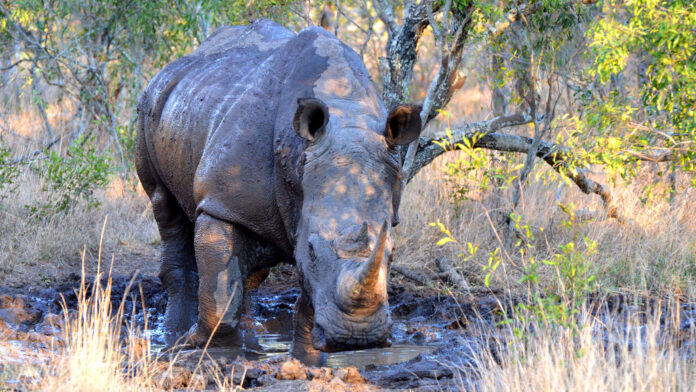Imagine it’s dry season on the African savanna. With their homes in these grassy woodlands, the wildlife is out and enjoying the local waterholes when a threatening sound rings out from just a few metres away.
So according to the animals, who is the most fearsome super predator on the planet?
The most threatening sound — the one that makes the zebras and impalas scatter the fastest, and the rhinoceroses and elephants abandon their waterholes at great personal cost — isn’t the growl of a pack of lions. It isn’t the barking of a pack of hunting dogs, or even the sound of gunshots.
It’s the sound of people talking calmly.
The international study was conducted in South Africa’s Greater Kruger National Park, one of Africa’s premier protected areas, and included contributions from Western University, the University of Minnesota, the University of South Africa, and the University of Wisconsin-Madison. The paper was published in Current Biology.
“These findings add a new dimension to our worldwide environmental impacts,” said first author Liana Zanette, professor of biology at Western University, in a press release.
“The very substantial fear of humans demonstrated here, and in comparable recent experiments, can be expected to have dramatic ecological consequences, because other new research has established that fear itself can reduce wildlife numbers.”
That could put a damper on tourism-based conservation, as even the benign chatter of observers leads to a significant fear response in the animals we’re trying to protect.
To find out which sounds trigger the greatest fear response, the researchers set up automated camera-speaker systems at 21 different waterholes in the park. They operated around the clock without any actual human presence that might affect the experiment.
When an animal passed by within 10 metres of the cameras, it triggered an audio track to be broadcast. The tracks fell into one of the following categories: lions, humans, hunting dogs, gunshots, and bird calls as non-predator controls. All the sounds were normalized to play at the same volume — loud enough to be audible but not to be startling.
The study captured over 4,000 reactions covering 19 species of mammals. The cameras captured that 18 out of 19 species were twice as likely to run from humans speaking than lions or hunting sounds. They also abandoned waterholes in 40 percent less time.
This was the first study to demonstrate that the fear of human voices is even greater than that of gunshots. The mammals of the savanna instinctively know what other research has confirmed: that nearly a third of all vertebrate species found on Earth are either killed by humans or captured by them as pets.
It also means that even when they aren’t hunting, people still inspire fear in these wild animals. Even keeping our voices down might not be enough to calm those fears, as humans can also be seen and smelled. This could be a problem for conservation areas that derive a significant amount of funding from tourism. Appropriate restrictions should be mapped out to minimize human impact.
On the other hand, human voice tracks could be used to safely deter animals from occupying areas where they are most at risk of poaching. The team found that the deterrent effect of hearing human voices can last up to 16 weeks.
This study adds to the international body of evidence that animals fear us, and that has many unintended effects. Fear itself has an impact on animal behaviour, as fearful animals tend to be hypervigilant, and they even have lower reproductive potential and reduced ability to care for their young, and this can significantly reduce wildlife numbers.
A better understanding of our impact will guide our conservation efforts and help us to better manage our protected areas.








































